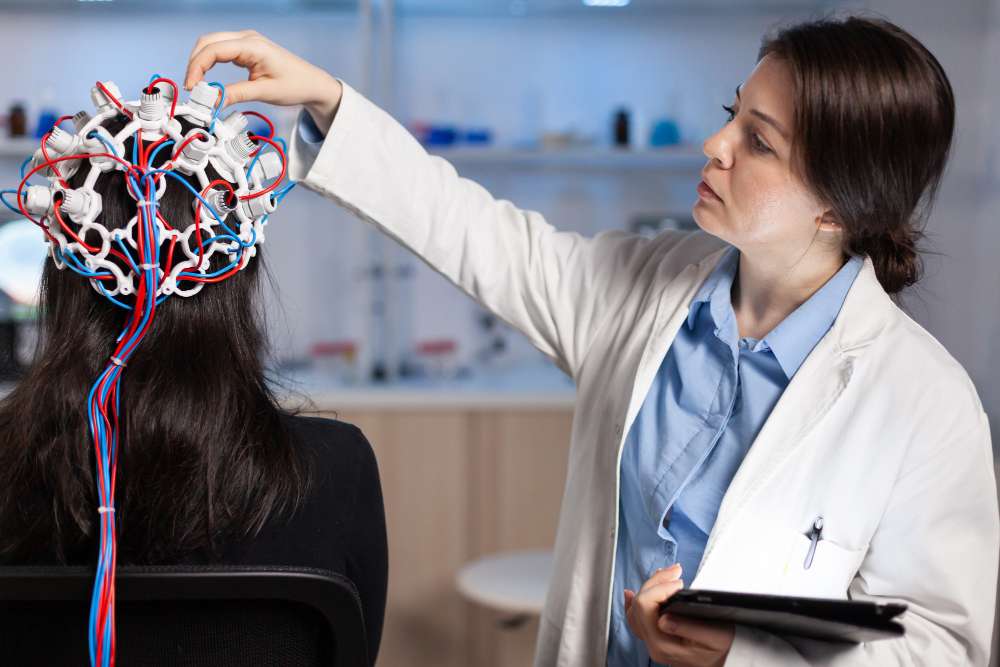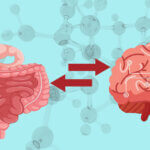Overview of Post-DBS Surgery Insights
Following Deep Brain Stimulation (DBS) surgery, a post-operative period involves careful monitoring and adjustments to optimize the device’s effectiveness. Expect a recovery phase with regular follow-up appointments to fine-tune stimulation settings and address any concerns. This dynamic process aims to ensure sustained relief from movement disorder symptoms. Patients can anticipate improvements in motor control and overall functioning. Comprehensive care involves adapting to individual needs, emphasizing ongoing support for a successful post-DBS surgery journey, and promoting an enhanced quality of life for those managing movement disorders.
Immediate Post-Surgery Period
The immediate post-surgery period after DBS surgery in Mumbai at our hospital involves monitoring for potential complications. Patients typically stay in the hospital briefly for observation. The focus is on ensuring the patient’s stability and addressing any immediate concerns. This phase sets the foundation for the subsequent recovery journey, which includes calibration and adjustments to optimize the DBS device for effective symptom control.
Monitoring and Observation
Monitoring and observation are crucial aspects of the immediate post-surgery period after deep brain stimulation. Patients remain under close watch for potential complications or side effects. This vigilance ensures prompt intervention if needed and sets the stage for a smooth transition into the recovery phase. Regular assessments during this period contribute to the overall safety and success of DBS in managing movement disorders.
Pain Management and Discomfort
Pain management and discomfort are addressed in the immediate post-surgery period after Deep Brain Stimulation (DBS). Deep brain stimulation doctors monitor and manage any pain or discomfort to ensure patient well-being. Medications and supportive care are provided as needed, contributing to a more comfortable recovery. This comprehensive approach emphasizes patient comfort and aids in the initial stages of adapting to the DBS intervention for movement disorder management.
Potential Complications and Their Management
The immediate post-surgery period for Deep Brain Stimulation (DBS) involves monitoring and managing potential complications. Infections, bleeding, or device-related issues are addressed promptly. Our deep brain stimulation doctors In Mumbai employ medications and interventions as needed to ensure patient safety. This proactive approach contributes to mitigating risks and optimizing the success of DBS in managing movement disorders, emphasizing the importance of thorough postoperative care.
Hospital Stay
The hospital stay after DBS surgery is typically brief, focusing on the immediate post-surgery period. Patients are closely monitored for stability, and potential complications are addressed. This short-term hospitalization provides a controlled environment for initial recovery, setting the stage for subsequent adjustments and calibrations to optimize the DBS device for effective symptom control in the management of movement disorders.
Duration of Hospitalization
The duration of hospitalization after DBS surgery is relatively short, typically lasting a few days. During this time, healthcare professionals closely monitor patients for stability, addressing any immediate concerns. This brief stay allows for initial recovery and observation before transitioning to the next phases of the DBS treatment journey, including device calibration and ongoing adjustments for optimal symptom control.
Post-Operative Care and Monitoring
Post-operative care and monitoring following Deep Brain Stimulation (DBS) involve regular assessments to ensure optimal recovery and device functioning. Deep brain stimulation doctors monitor for potential side effects or complications and make necessary adjustments. This vigilant approach contributes to the overall safety and success of DBS in managing movement disorders, emphasizing the importance of ongoing care and adaptation to individual needs.
Transitioning Home
Transitioning home after deep brain stimulation treatment involves careful post-operative instructions and ongoing monitoring. Patients receive guidance on wound care, medication schedules, and signs of potential complications. Regular follow-up appointments are scheduled to continue device adjustments and ensure patient well-being during the initial recovery phase. This transition emphasizes a collaborative approach between healthcare professionals and patients for a successful post-DBS surgery journey.
Discharge Instructions and Medication Management
Discharge instructions after deep brain stimulation surgery include guidance on wound care, activity restrictions, and signs of complications. Patients receive a detailed medication plan to manage pain and optimize recovery. Clear communication and adherence to prescribed medications contribute to a smooth transition home, ensuring the success of DBS in managing movement disorders during the initial post-operative period.
Home Modifications and Assistive Devices
Home modifications and assistive devices may be recommended after deep brain stimulation surgery. Creating an environment conducive to recovery involves ensuring a clutter-free and accessible space. Assistive devices, such as handrails or elevated seating, can enhance safety. These adjustments support the patient’s comfort and facilitate the transition home, contributing to a successful post-DBS surgery recovery.
Follow-Up Appointments and Care Plan
Post-deep brain stimulation surgery, follow-up appointments are scheduled to monitor recovery progress and fine-tune the device for optimal symptom control. A personalized care plan is devised, encompassing ongoing adjustments and addressing any concerns. Regular communication between healthcare professionals and patients ensures a comprehensive and adaptive approach to managing movement disorders, fostering long-term success in DBS treatment.
Emotional and Psychological Aspects
The emotional and psychological aspects following deep brain stimulation treatment are vital considerations. Patients may experience a range of emotions during the recovery phase. Open communication with healthcare providers is encouraged, and support from loved ones plays a crucial role. Addressing these emotional aspects contributes to a holistic approach to managing movement disorders through DBS, promoting overall well-being.
Coping with Changes in Symptoms
Coping with changes in symptoms after Deep Brain Stimulation (DBS) involves regular communication with healthcare providers. Adjustments to the device may be necessary, and patient feedback is crucial. Emotional support, both from healthcare professionals and loved ones, plays a vital role in adapting to these changes. This collaborative approach ensures a proactive response to evolving symptoms, enhancing the success of DBS in managing movement disorders.
Family and Caregiver Support
Family and caregiver support is essential after deep brain stimulation. Their understanding of the recovery process and involvement in post-operative care contribute to a patient’s well-being. Open communication allows for shared experiences and fosters a supportive environment. The involvement of family and caregivers is integral to the overall success of DBS in managing movement disorders and creating a network of care.
Mental Health and Well-Being
Prioritizing mental health and well-being post-deep brain stimulation treatment involves acknowledging the emotional aspects of recovery. Patients benefit from support networks, including healthcare professionals and loved ones. Open communication, emotional support, and a proactive approach to mental health contribute to a holistic recovery, enhancing the overall well-being of individuals managing movement disorders through DBS treatment.
Long-Term Recovery and Maintenance
As per the deep brain stimulation center Long-term recovery and maintenance following Deep Brain Stimulation (DBS) involve regular follow-up appointments for ongoing device adjustments and monitoring. Adapting to changes in symptoms requires open communication with healthcare professionals, and a supportive environment contributes to sustained success. Consistent care and collaboration ensure that individuals effectively manage movement disorders through DBS, promoting long-term well-being.
Regular Follow-Up Visits and Monitoring
Regular follow-up visits and monitoring are essential components of the long-term recovery process after deep brain stimulation. These appointments allow healthcare professionals to assess the device’s ongoing effectiveness, make necessary adjustments, and address any emerging concerns. Consistent follow-up care ensures the sustained success of DBS in managing movement disorders, promoting the overall well-being of individuals in the long term.
Fine-Tuning the DBS Settings
Fine-tuning Deep Brain Stimulation (DBS) setting is a crucial aspect of long-term management. Regular follow-up appointments involve adjusting the stimulation parameters to optimize symptom control. Patient feedback, along with careful monitoring, guides these refinements. This dynamic process ensures that the DBS device continues to effectively manage movement disorders, contributing to the sustained success of the intervention and the overall well-being of individuals.
Lifestyle Adjustments and Supportive Therapies
Long-term management of movement disorders through deep brain stimulation treatment involves lifestyle adjustments and supportive therapies. Patients may benefit from incorporating healthy habits, such as regular exercise and stress management. Collaborative efforts with healthcare providers for ongoing support and engagement in complementary therapies contribute to the holistic well-being of individuals relying on DBS for sustained symptom control.
Discover the approach of exercise and DBS in trigeminal neuralgia care in our recent blog post: Approach of Exercise and DBS in Trigeminal Neuralgia Care
The post-deep Brain Stimulation (DBS) surgery journey involves careful monitoring, adjustments, and ongoing support. Expect a brief hospital stay, meticulous post-operative care, and regular follow-ups to fine-tune the device for optimal symptom control. Managing potential discomfort, emotional aspects, and lifestyle adjustments contribute to a holistic recovery. Open communication with healthcare professionals, family, and caregivers is key. DBS offers transformative benefits for movement disorder management, and understanding the post-surgery expectations ensures a smooth transition into long-term, well-supported recovery, emphasizing improved quality of life for individuals undergoing this innovative intervention.






